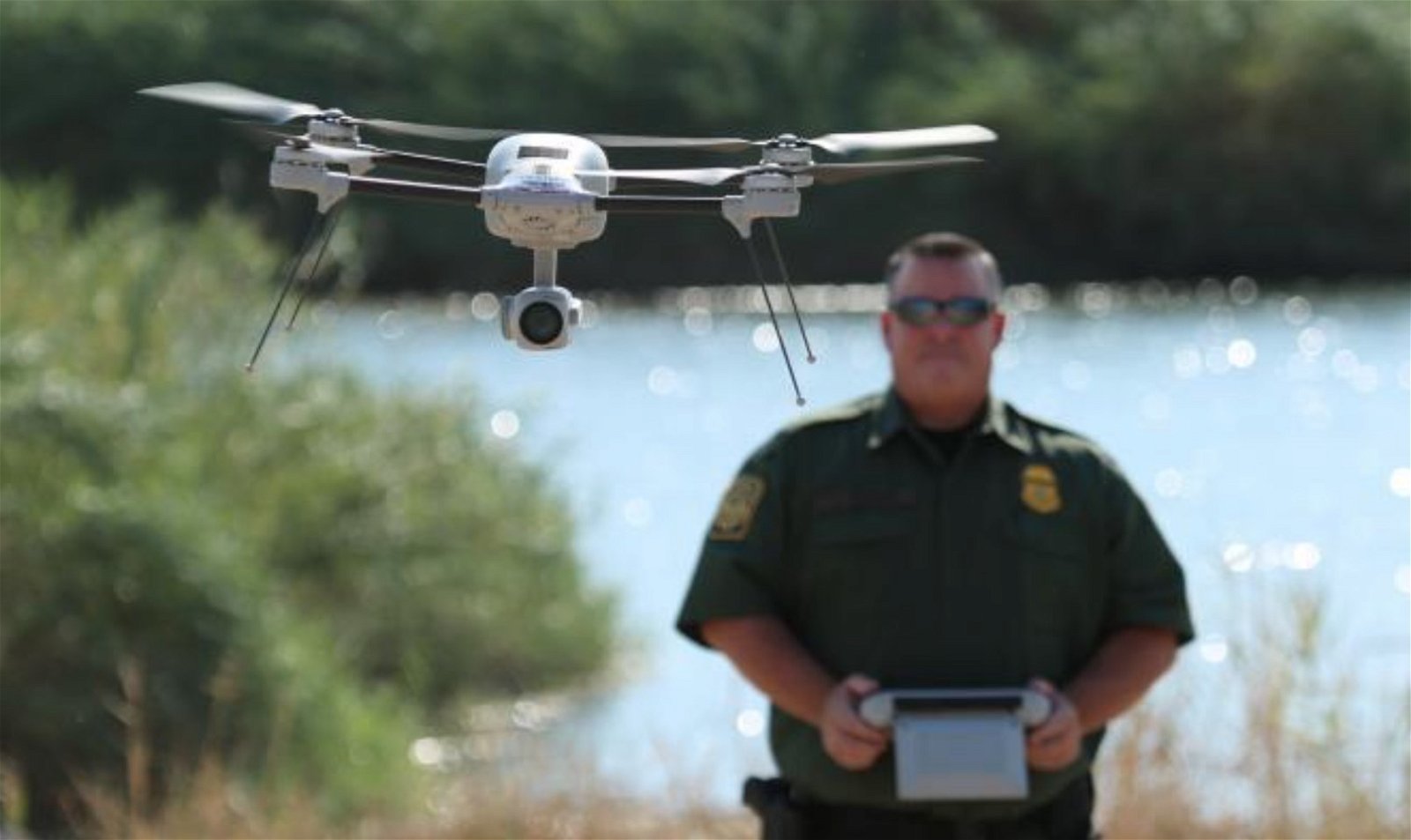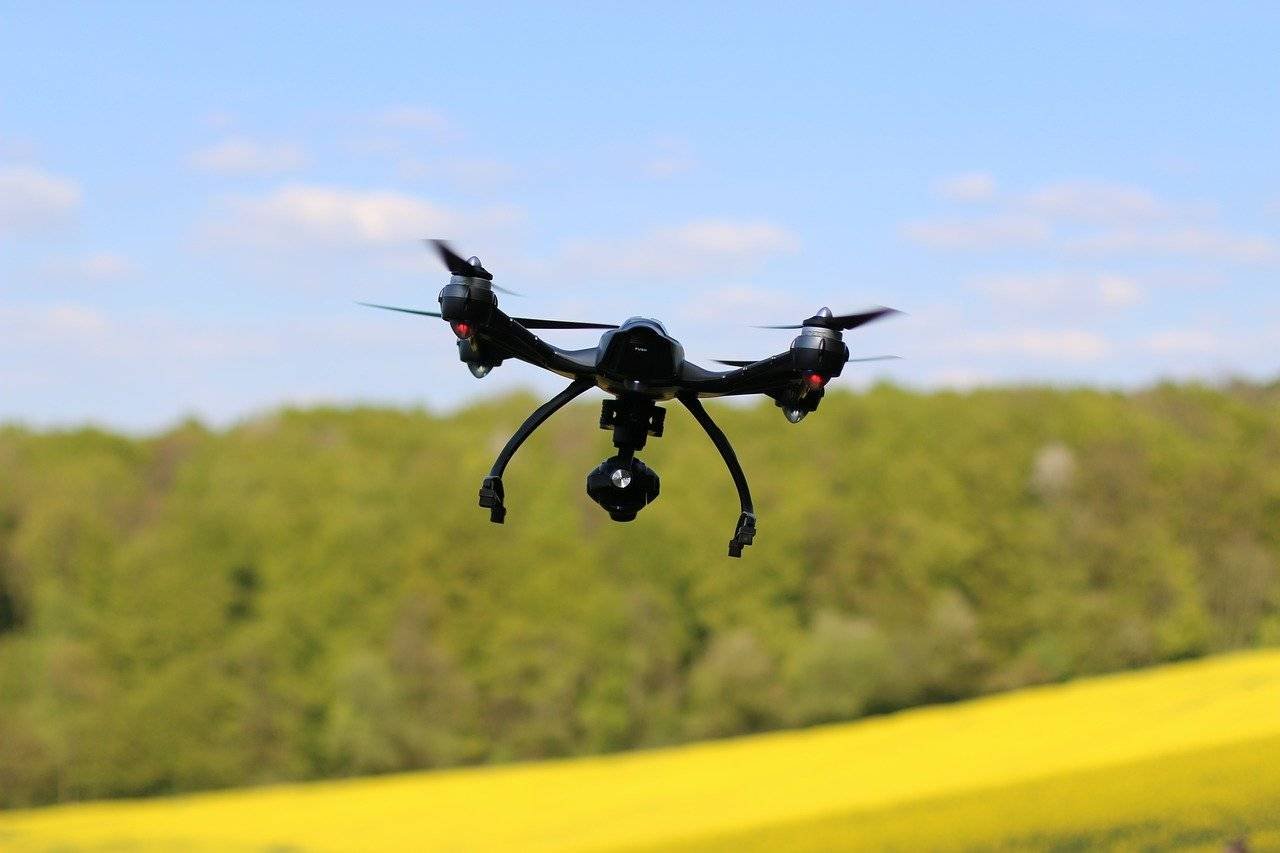

Welcome to this week’s Intelligence Brief. In this installment, we’ll be looking at 1) autonomous drone systems used by government, 2) the contentious relationship between government agencies and Silicon Valley, and 3) building the proper infrastructure for the future widespread use of drones for delivery.
Before we dive into things, a quick glance at some of the topics we’re talking about over at The Debrief over the last few days include the potential threats posed by AI (and more importantly, the AI ambitions of countries like China), space hurricanes, strange striped features spotted by satellites over Siberia, and a mysterious new patent describing a warp drive technology which appeared online in recent days. To save you some work, I’ll include links to all our recent stories at the bottom of this newsletter.
And with that, it’s time to turn our attention toward the Department of Homeland Security’s aims to build autonomous drones for border protection.
Hands-Free Surveillance Drones
“Autonomous artificial intelligence (AI) based cooperative control of surveillance drones can provide on-demand continuous eyes-on-target which can be a force multiplier for border protection, search and rescue, first response, law enforcement, and many other spaces,” read a 2018 Homeland Security Systems Engineering and Development Institute (HSSEDI) Task Research Execution Plan, produced by the nonprofit Mitre Corporation.
According to the document, “The cognitive load and skill needed to successfully pilot dozens of unmanned aerial vehicles (UAVs) for real-time coordinated persistent surveillance of multiple air or ground targets is prohibitive for human-in-the-loop control.”
The aim of the HSSEDI plan was simple: utilize autonomous AI so that humans would no longer be required for piloting drones. “The key goal of this project,” the Execution Plan states, “is to eliminate the need for manual emote piloting of teams of drones for airborne multi-target visual detection and tracking of air or ground targets.”


Mitre Corp’s Execution Plan had been in response to an order placed by Customs and Border Protection for a fleet of autonomous drones. According to Forbes Associate Editor Thomas Brewster, “To research and build the drones, CBP handed $500,000 to Mitre Corp., a trusted nonprofit Skunk Works that was already furnishing border police with prototype rapid DNA testing and smartwatch hacking technology.”
Unfortunately, Mitre’s plans didn’t quite pan out, as they had been unable to see the project through from planning to completion. Despite this, it is worth noting that the Mitre appears to still be pursuing autonomous technologies. As recently as January, the nonprofit announced a year-long plan called its Heterogeneous Autonomous Vehicles with Intuitive Control (HAVIC), of which they wrote at their website that “MITRE is taking existing autonomous technologies that work for single vehicles and wrapping them into a common command and control framework for collaborative missions with different kinds of robots.”
Silicon Valley’s Contentious Relationship with Government
Meanwhile, Customs and Border Patrol took their operation elsewhere, ultimately relying on California-based Skydio for the production of its drones. According to Forbes, an estimated 20 or more U.S. police agencies “now have Skydios as part of their drone fleets, including major cities like Austin and Boston,” adding that free drones were provided to many companies as part of pandemic relief aid.
According to the company’s website, “Though many claim autonomy, conventional drones feature little more than waypoint missions and basic obstacle detection. Skydio AI is different.”
“Our drones use six 4K cameras to build a 3D map of their surroundings, deep learning algorithms to understand what they’re seeing, and advanced AI to predict into the future and make intelligent decisions,” the Skydio website says.
Navigating the political challenges tech companies who elect to partner with government agencies face in the current environment can be difficult. Addressing the controversy involving his company’s partnering with Customs and Border Patrol, Skydio cofounder Adam Bry told Forbes, “It’s unfortunate that some of these agencies are as polarized as they are . . . I think that an organization like Customs and Border Patrol performs an absolutely critical function for society that we all depend on.”
“The US government needs to work with tech companies and tech executives clearly want to work with the US government,” read a 2018 article featured at the website of the Atlantic Council, a nonpartisan group which supports leadership in addressing a variety of global issues. “But in recent months, a number of major tech companies—including Amazon, Google, and Salesforce—have experienced employee backlash against government contracting.”


The reason for the backlash is nuanced, although it has much to do with a general distrust for government, as well as distaste for the actions of federal agencies. Among the examples cited at that time had been the dozens of Microsoft employees who denounced their employer’s work with U.S. Immigration and Customs Enforcement (ICE), on account of the agency’s operations that often separated children from their parents and other family members. More than 100 Microsoft employees called for the end of a contract the tech giant had with ICE which would provide computing and AI services, to the tune of nearly $20 million.
Drones, Industry, and Infrastructure
As drone technologies and their applications are taking off, a recurring theme in the broader discussion of their use and capabilities is their role as a force multiplier, whether when used by governments, or by industries.
The expression has its roots in military science and refers to factors, or combinations of them, which amplify individuals and the systems they utilize—including weaponry—in ways that cannot occur without their use. Despite the obvious advantages drone systems provide to government operations, their usefulness is becoming equally vital to industries who are already beginning to rely on them for deliveries and other time (and money) saving operations. However, in order for drones to be an asset to the industries of tomorrow, it will require proper infrastructure built today that will facilitate their use on down the road.
“Ensuring safe, secure, scalable, and autonomous drone delivery requires strategic rollout and planning of appropriate infrastructure,” Danielle Gagne wrote this week, highlighting the work of companies like IDU Group, a company whose focus is end-to-end automated delivery systems.
“Smart infrastructure is key to enabling the wider drone delivery proposition to integrate into the places we live and work,” Kevin Duckers, the company’s CEO, told Commercial UAV News. “Let’s make sure the infrastructure is in-place, to receive drones when they’re ready to go. A natural next step would be going further with industry test cases so far, making them more closely resemble the way automated drone delivery is likely to operate in real life.”
Even in recent days, the usefulness of drone delivery has been put to the test in helping fight COVID-19. It was reported this week that Zipline, a company that produces drones and autonomous systems for vital on-demand delivery situations around the world, will be aiding in the delivery of COVID-19 vaccines to a number of health care facilities in Ghana.
“This makes Ghana the first country in the world to deploy drones on a national scale to deliver COVID-19 vaccines,” a press release stated.
Drone technologies are advancing quickly, and their force-multiplying capabilities are already changing aspects of commerce in the here-and-now, in addition to redefining the ways government agencies perform vital functions–as well as controversial ones–in the realms of security, surveillance, and warfare.
That concludes this week’s Intelligence Brief. Of course, you can subscribe and get email updates from us here, or read past editions of The Intelligence Brief at our website. And as always, if you have a tip or other information you’d like to send along directly to me, you can email me at micah [@] the debrief.org.


Meanwhile, here are the top stories we’re covering right now…
- Experts Baffled by Strange Stripes in Siberia
Satellite photos of Russia’s Markha River in Arctic Siberia have provided clues to an odd geological riddle.
- “DearMoon” To Give 8 Random People a Free Ride To The Moon
Japanese billionaire Yusaku Maezawa has invited the public to join him on a six-day trip to the moon as part of SpaceX’s “dearMoon” project.
- Space Hurricanes Confirmed by Scientists Studying Mysterious Plasma Phenomena
Scientists have confirmed the existence of “space hurricanes” that produce showers of electrons instead of water and wind.
- U.S. Unprepared For Coming AI Threat, National Security Commission Finds
The National Security Commission on Artificial Intelligence (NSCAI) says the U.S. is unprepared to compete with China in the coming AI era.
- Mysterious New Warp Drive Patent Surfaces Online
After appearing for decades in science fiction, then moving into an actual theory, a new patent for an updated warp drive was published last year to no fanfare.
- Is Apple Really Building A Car?
Is there really an Apple car? There is a lot of smoke but no fire. What do we know, and what is still a mystery?
- New Study Says Atlantic Ocean Circulation is Weakest in 1600 Years
A recent study suggests that the Atlantic Ocean circulation that affects climate conditions is moving more slowly than it has since 400 AD.
- Is China working on a Space Force Equivalent? | Tom Rogan & Micheal Mataluni
National Security journalist Tom Rogan weighs in on whether China is developing its own space force. Is another “Space Race” looming?
- Perseverance Brought a “Family Portrait” to Mars, Continuing a NASA Tradition
Perseverance arrived on Mars with a “family portrait,” continuing a long NASA tradition of sending images to space detailing life on Earth.
- Fighter Pilots Rely on Technology That Will One Day Steal Their Jobs
Technology that helps save the lives of fighter pilots may one day eliminate the need for the pilots it was designed to protect.
- UK Fireball: Historic Meteor Lights up the Sky over Great Britain Experts Pinpoint the Area They Believe Meteorite Fragments Landed
The American Meteor Society (AMS), which monitors and tracks meteor sightings worldwide, said the UK fireball was one of the most significant meteor events in modern history.
- Bill Allowing Big Tech To Form “Techno-Governments” To Be Announced Today
Nevada is proposing legislation that would allow major technology companies to effectively form independent techno-governments.
- These Anti-Solar Panels Don’t Need Daylight To Generate Power
A team of UC Davis researchers are hoping to develop a variety of improved solar panels that can still generate heat even in the absence of sunlight.
- New Cancer Treatment Uses A Mini CERN Particle Accelerator To Blast Tumors With Ion Beams
The Next Ion Medical Machine Study uses CERN particle accelerator technology to build next gen ion accelerators to treat cancerous tumors.
- Magnetic Pole Reversal 42,000 Years Ago Led to Environmental Crisis Scientists warn that similar problems, and even extinction events, could happen again.
A new study looks at ancient tree ring data for answers about the mystery of magnetic pole reversal, and how it affects the environment.
- The Pros and Cons of Animal Cloning
The Debrief takes a deep dive and looks at the varying pros and cons of animal cloning and genome editing of species.